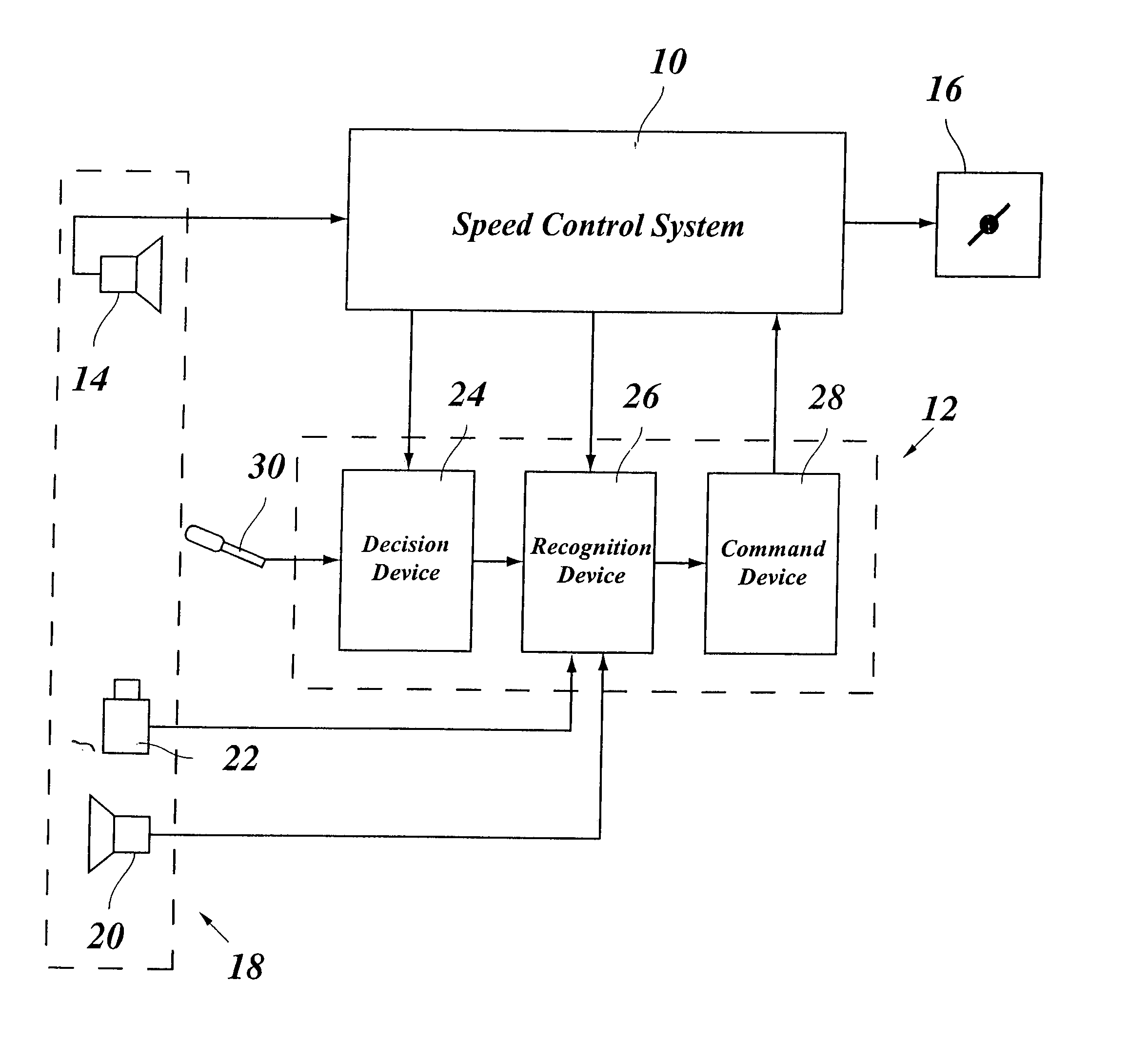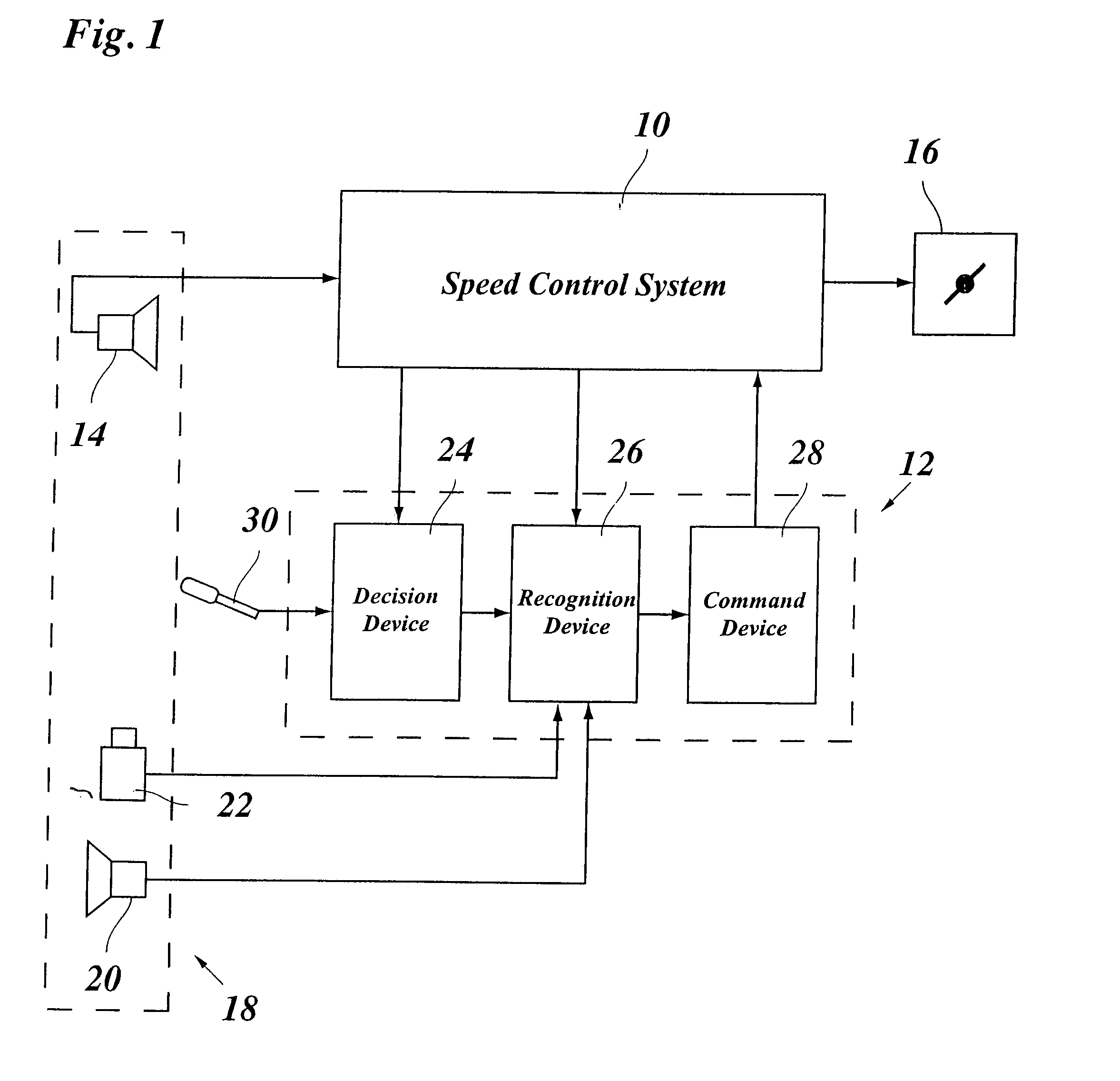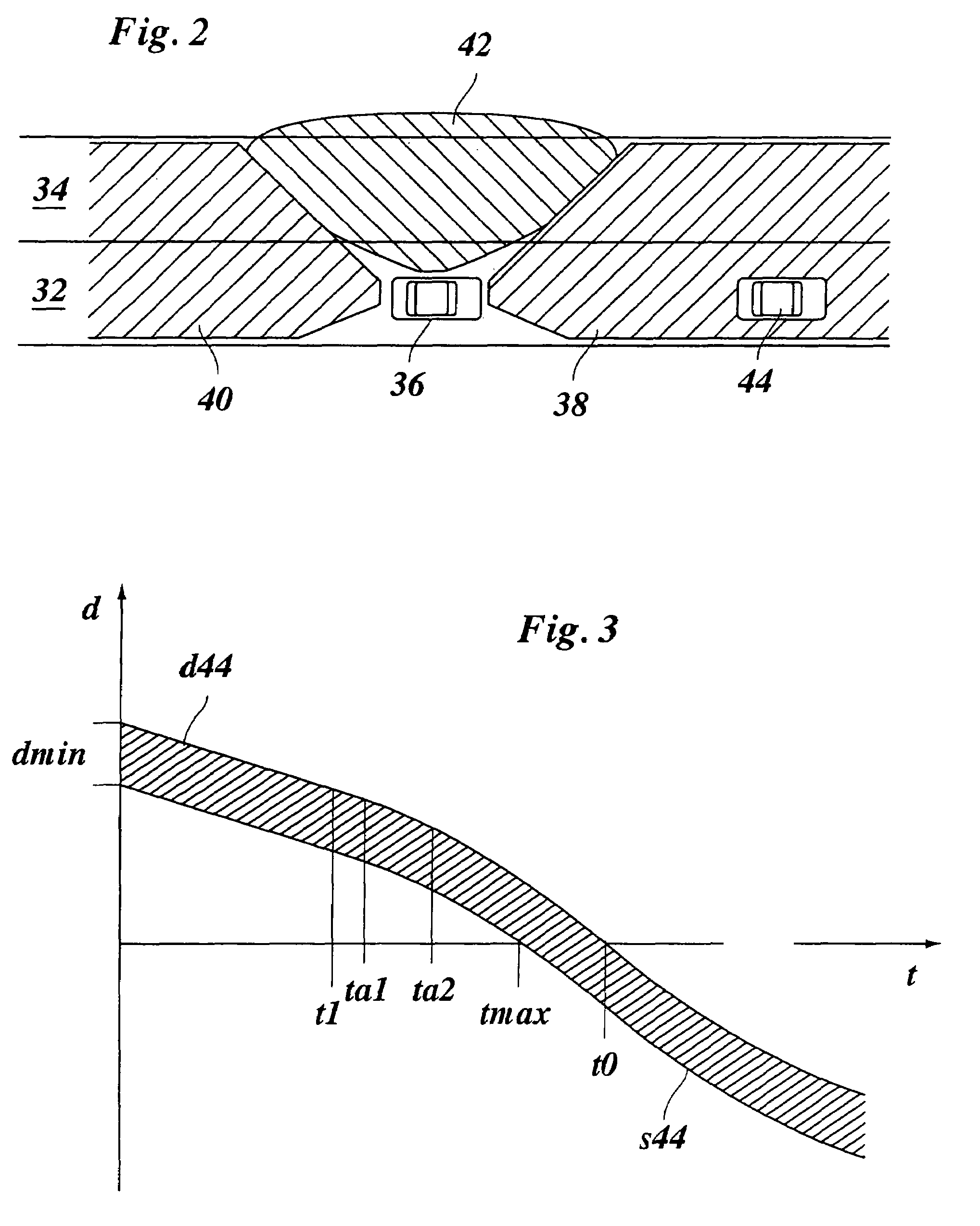Lane changing assistant for motor vehicles
a technology for assistants and motor vehicles, applied in brake systems, process and machine control, instruments, etc., can solve the problem of not being able to change lanes, and achieve the effect of making the change of lanes easier for the driver
- Summary
- Abstract
- Description
- Claims
- Application Information
AI Technical Summary
Benefits of technology
Problems solved by technology
Method used
Image
Examples
Embodiment Construction
[0033]As a simplified block diagram, FIG. 1 shows a speed control system 10 for a motor vehicle, and an appertaining lane changing assistant 12. Speed control system 10 receives signals from a front radar 14 and intervenes in drive system 16, as well as in the braking system of the vehicle, if necessary, that is not shown. The functions of speed control system 10 correspond to those of a known ACC system, and are therefore not explained here in greater detail.
[0034]Front radar 14 is a part of a surroundings sensor system 18, to which there also belongs a rear-facing radar 20 and a very close range sensor 22.
[0035]Lane changing assistant 12 is represented here by three function blocks, namely, one decision device 24 to decide whether a lane changing request should be accepted, a recognition device 26 to recognize a suitable lane changing window in flowing traffic in the adjacent lane, and a computing device 28 to compute an acceleration strategy, and to output a corresponding acceler...
PUM
 Login to View More
Login to View More Abstract
Description
Claims
Application Information
 Login to View More
Login to View More - R&D
- Intellectual Property
- Life Sciences
- Materials
- Tech Scout
- Unparalleled Data Quality
- Higher Quality Content
- 60% Fewer Hallucinations
Browse by: Latest US Patents, China's latest patents, Technical Efficacy Thesaurus, Application Domain, Technology Topic, Popular Technical Reports.
© 2025 PatSnap. All rights reserved.Legal|Privacy policy|Modern Slavery Act Transparency Statement|Sitemap|About US| Contact US: help@patsnap.com



